Overflowing with curiosity about mason bees? Dive into whether or not these pollinators need to be harvested and why.
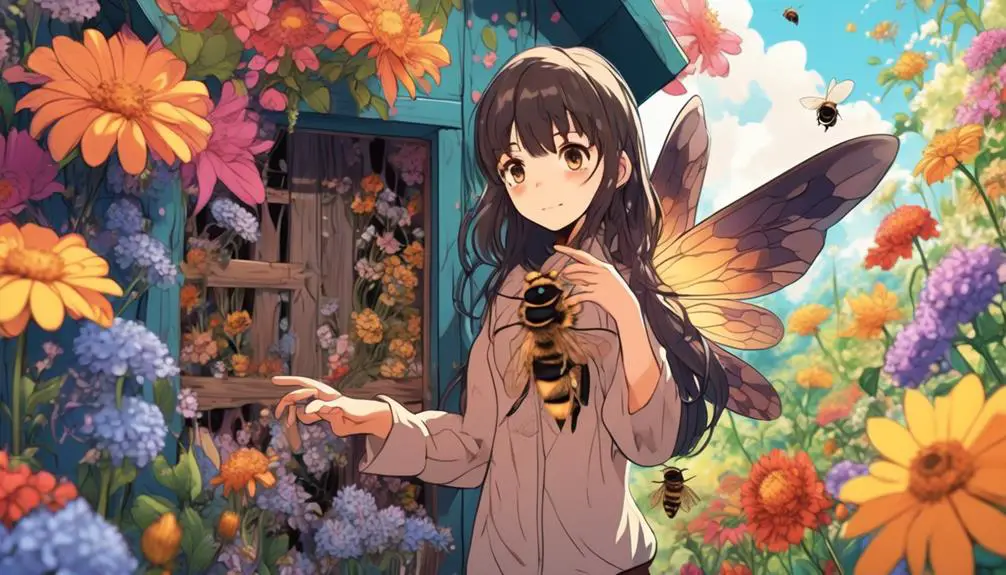
Do I Have to Harvest Mason Bees?
Did you know that a single mason bee can pollinate as much as 100 times more than a honeybee?
You've likely heard about the importance of these industrious insects in our ecosystems, but you may be wondering if you need to 'harvest' them.
While it's true that mason bees are self-sufficient in the wild, there are compelling reasons why you might consider the process of harvesting. This involves removing their cocoons from nesting tubes or blocks, cleaning them, and storing them properly until the next spring.
But is this necessary for all mason beekeepers?
Let's explore this question further.
Key Takeaways
- Mason bees are exceptional pollinators, pollinating up to 100 times more than honeybees.
- Harvesting mason bees promotes their health and reduces the spread of harmful pathogens.
- Relocating harvested cocoons supports both bee and ecosystem health.
- Harvesting mason bees is essential for maintaining a healthy and sustainable population.
Understanding Mason Bees
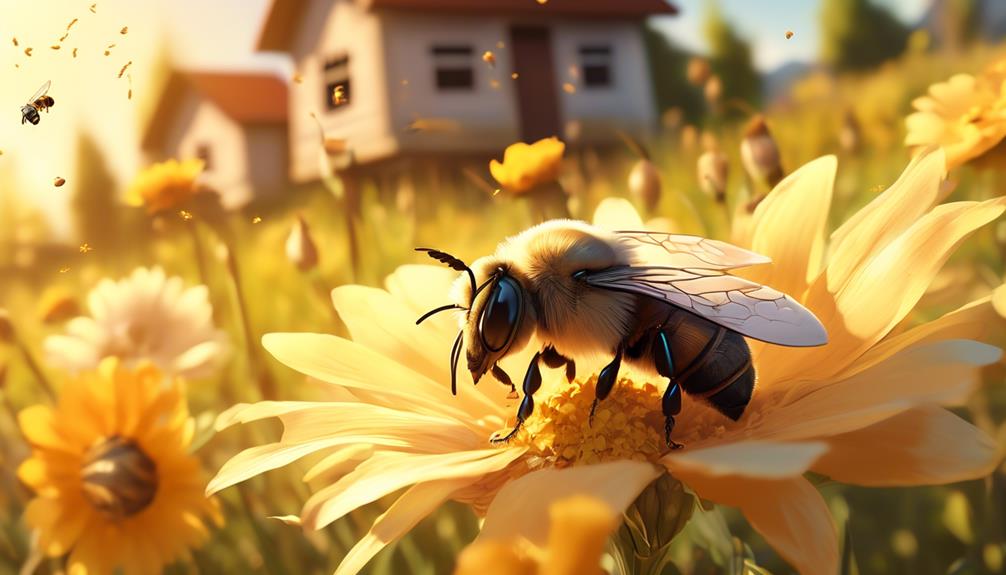
To fully appreciate the process of harvesting mason bees, you must first understand these fascinating creatures' unique biology and behavior. Unlike honeybees, which live in large, complex colonies, mason bees are solitary insects. Each female mates, then independently builds her nest, filling it with pollen and nectar for her future offspring.
Mason bees are meticulous builders. They use mud to construct their nests, hence their name, creating individual cells for each egg. They're not aggressive, and sting only when threatened. They're also exceptional pollinators, far more efficient than their honeybee counterparts.
These bees' lifecycle is intriguing. They emerge from their cocoons in early spring, mate, and the females begin nest-building. By summer, the eggs have hatched into larvae that feed on the stored pollen and nectar. When it's time, they spin cocoons and metamorphose into adults, hibernating through the winter to start the cycle anew in spring.
Understanding these aspects of mason bees' biology and behavior is crucial to successful harvesting. It's not just about getting honey, but about supporting these valuable pollinators in their essential role in our ecosystem.
What Does 'Harvesting' Mean?
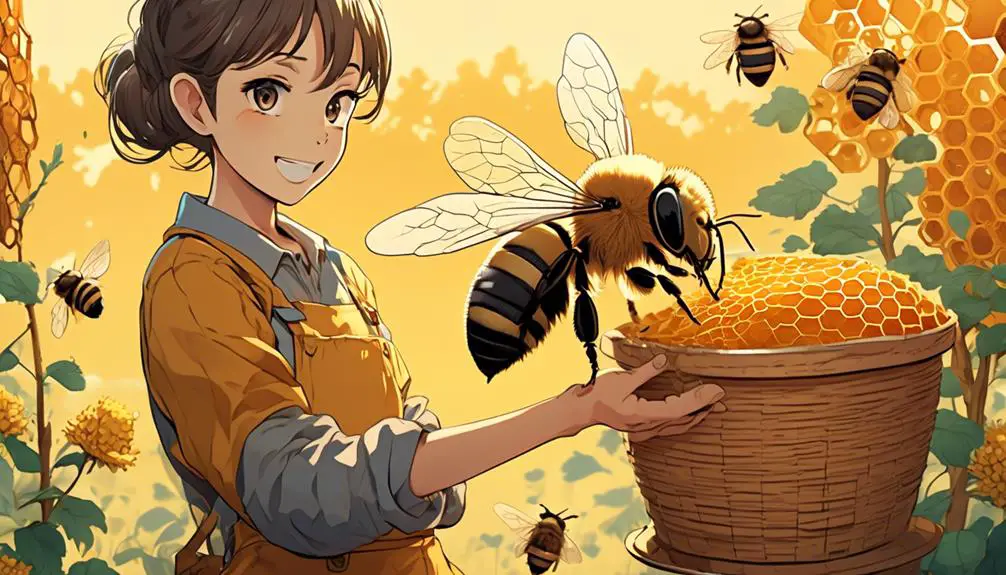
When we talk about 'harvesting' mason bees, we're not referring to collecting honey as you might initially think, but rather to the process of gathering their cocoons in late fall or early winter. This is a crucial part of maintaining a healthy mason bee population.
Harvesting involves carefully removing the cocoons from their nests without causing harm to the developing bees inside. These cocoons, each containing a dormant bee, are then cleaned to remove any mites or fungi that could harm the bee or spread to others.
After cleaning, cocoons are stored in a cool, dry location to mimic the natural overwintering conditions that mason bees would experience in the wild. This simulates their hibernation period and helps ensure their survival through the colder months.
In the spring, these harvested cocoons are then placed back outside in a bee house or nesting box where they can emerge safely. This process not only helps to increase the mason bee population but also allows you to control the timing and location of their release, ensuring the best possible conditions for their survival.
Reasons for Harvesting Mason Bees
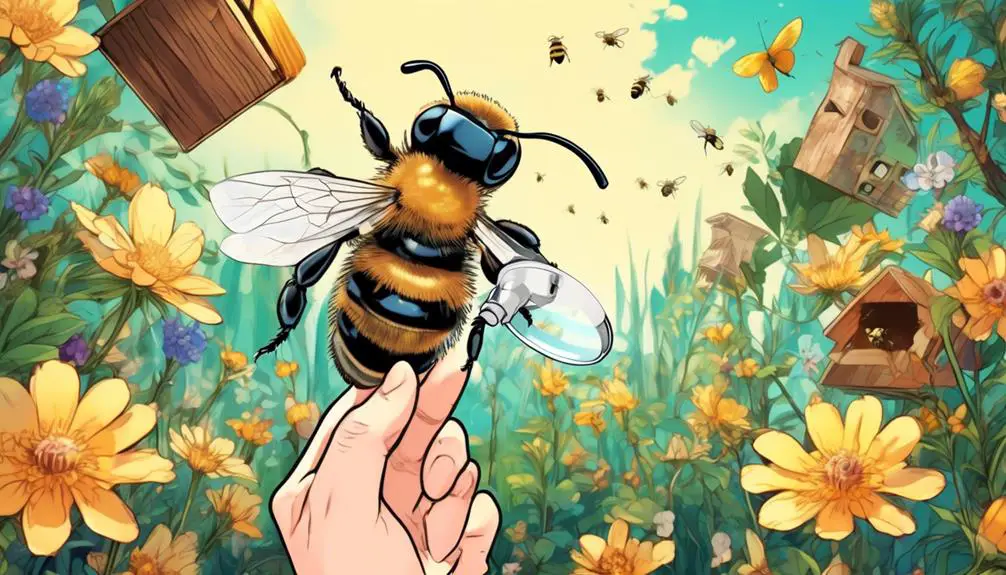
Understanding the reasons for harvesting mason bees is pivotal, as it's not just about increasing their population, but also about maintaining their health and ensuring the sustainability of our ecosystem. You see, mason bees, like other pollinators, play a key role in biodiversity.
They're responsible for pollinating many of our food crops and wild plants, enhancing the productivity of our gardens and natural landscapes.
When you harvest mason bees, you're actively promoting their health. Inside their cocoons, mason bees can fall victim to pests, diseases, and parasites. By harvesting, you can inspect the cocoons, removing affected ones and thus reducing the spread of harmful pathogens.
Moreover, harvesting allows you to control population distribution. Mason bees have a limited foraging range. If too many are hatched in one area, competition for resources rises, negatively impacting their survival rate. By relocating harvested cocoons, you're ensuring a more balanced distribution, which supports both bee and ecosystem health.
The Harvesting Process Explained
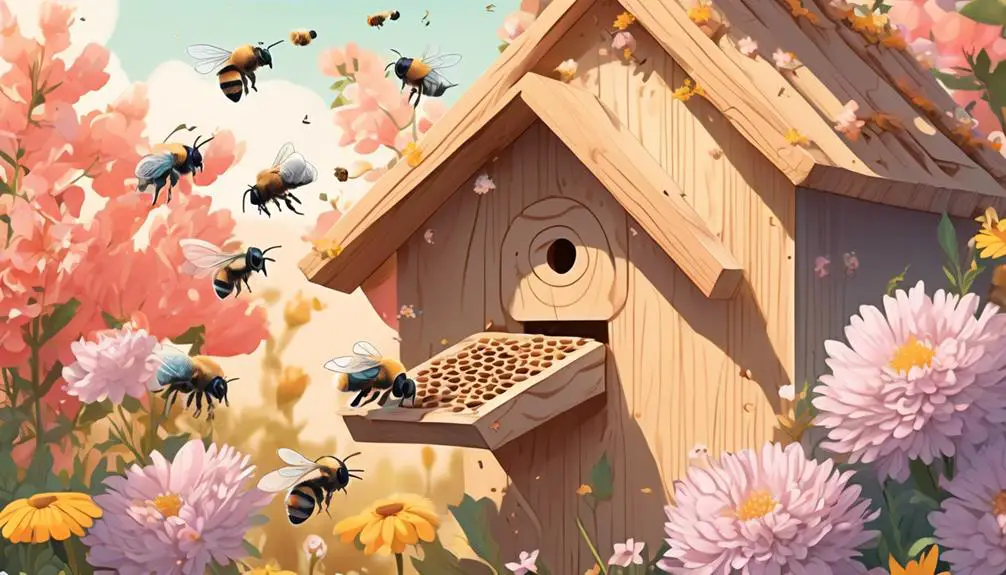
Now that we've established the importance of harvesting mason bees for their health and the balance of our ecosystem, let's explore the intricate process involved in harvesting these industrious pollinators.
Your harvesting efforts should ideally start in the autumn when the bees have finished their pollinating season. Begin by carefully removing the nesting tubes, blocks, or reeds where the mason bees have laid their eggs. It's necessary to open these structures to access the cocoons inside.
Next, you'll need to clean the cocoons. This is crucial to remove parasites, mites and other potential threats to the bees' health. Soak them in a mild bleach solution for a few minutes, then gently rinse with water and let them dry completely.
Once dry, you'll have to chill the cocoons to mimic the winter season. This can be done in a refrigerator. The chilling period must last until spring, aligning with the natural lifecycle of mason bees.
When spring arrives, place the cocoons outside in a bee house or other sheltered location. As temperatures rise, your mason bees will emerge, ready to pollinate.
Congratulations, you've successfully completed the mason bee harvesting process!
Caring for Harvested Mason Bees
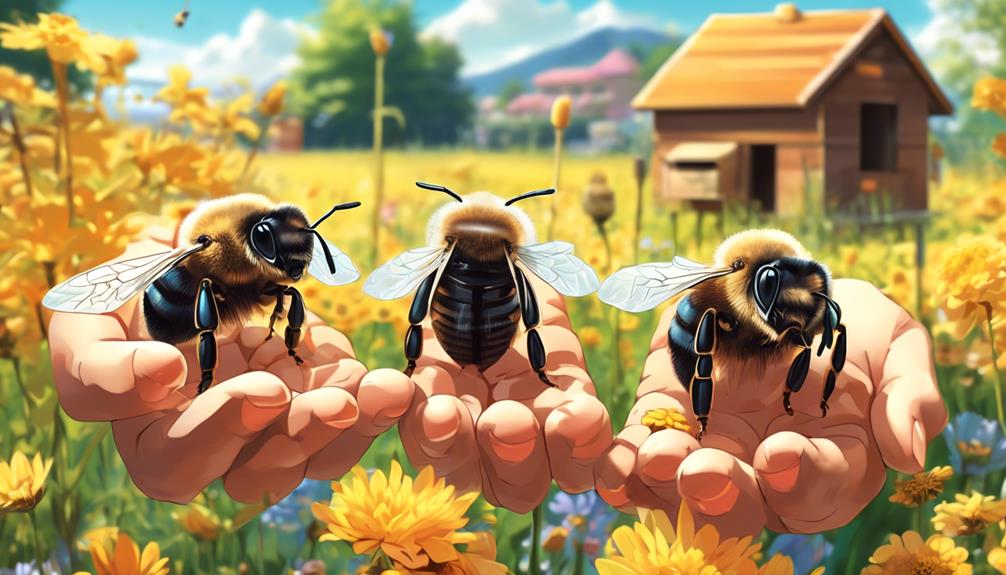
After successfully harvesting your mason bees, it's crucial to turn your attention towards their proper care to ensure they thrive and continue to play their vital role in the ecosystem.
Start by storing the cocoons in a breathable container, such as a cardboard box, with plenty of ventilation to prevent mold growth. Maintain a cool temperature of about 34-38 degrees Fahrenheit to simulate a winter environment and keep these hibernating pollinators dormant.
Next, ensure their safe overwintering by placing the container in a location safe from predators and extreme temperatures. A fridge can serve this purpose effectively, but remember to monitor the humidity and temperature levels regularly. Too dry conditions can dehydrate the bees, while too damp can lead to fungal infections.
In the early spring, when outside temperatures consistently reach 50-55 degrees Fahrenheit, you can release your mason bees. Do this by placing the container outside in a sheltered location, preferably close to the mason bee house. This way, as the bees emerge from their cocoons, they'll find a ready-made home waiting for them.
Proper care of your harvested mason bees ensures a healthy population for the next pollination season.
Conclusion
So, you've learned all about mason bees and the 'harvesting' process. It's certainly not a requirement, but it's beneficial in maintaining a healthy population.
Remember, it's more than just extracting cocoons; you're also ensuring their wellbeing through proper care.
With your newfound knowledge, you're now equipped to make an informed decision on whether to harvest mason bees or not.
Either way, your contribution to their survival is admirable.


